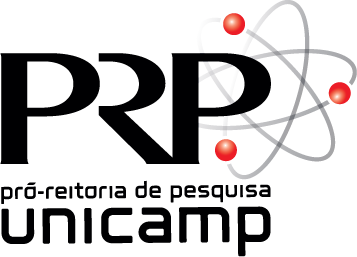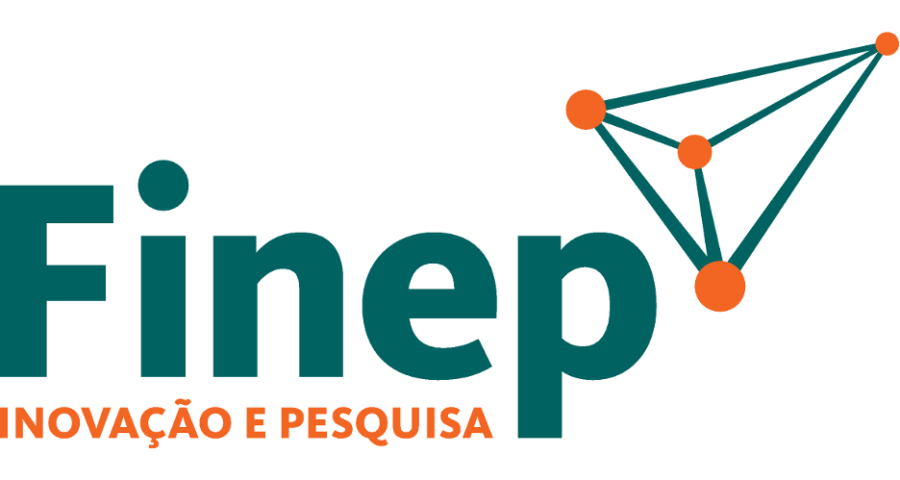Funding Agencies and Institutions
Ongoing Projects
Electrochemical Reduction of Nitrate to Ammonia Catalysed by Single Atoms and Metallic Oxides
FAPESP Regular Program (24/03807-7) Nitrogen gas, as the main component of air, has been used for mass ammonia production for over a century, providing enough nutrition for agriculture and the world population growth. In recent years, significant effort has been made to develop sustainable production processes of ammonia under mild conditions, with the aim of addressing the intensive energy consumption and high carbon emissions associated with the traditional Haber-Bosch process. Among various approaches, the electrochemical nitrate reduction reaction (NO3RR) stands out, which allows the simultaneous removal of nitrate from contaminated streams and the generation of ammonia using renewable electricity as an energy source. In this project, we propose the use of two classes of electrocatalysts to improve the performance of this reaction, namely: single atoms (Co, Cu, Ni and Fe) supported on bidimensional matrixes (PHI and NC) and nanostructured (plates and wires) metal oxides (Co3O4, Cu2O and Ag2O) based on transition metals. Both alternatives have physicochemical properties required to reduce the high overpotential to trigger the reaction and to increase Faradaic efficiency followed by high yield rates of ammonia production. The focus of this project is not only to evaluate the electrochemical performance of the material, but to identify the electrocatalyst’s active sites and the adjustment of its activity with the aid of in situ monitoring of the reaction intermediates along with the electronic and structural material properties using operando X-rays absorption spectroscopic advanced techniques.
Development of an Electro-refinery for the Synthesis of High-Value Added Products from Biomass Treatment in Hybrid Reactors
CNPq Universal (421313/2023-4) The electrolysis of water to produce H2 involves a evolution of hydrogen evolution (HER) at the cathode; and the occurrence of oxygen evolution (OER) at the anode. OER is the bottleneck for the expansion of this technology, as it is responsible for large energy losses, increasing the electrical potential required in HER, in addition to high-cost materials required. Hybrid electrolysis can be proposed, OER is preserved by the occurrence of organic oxidation electrochemistry (OOR) to reduce anode overpotentials, but also to valorize organic waste, water security measures and economic forecasts. The best electrocatalysts for HER-OOR are based on expensive and scarce metals. The project will explore predictions of low-cost anode and cathode materials tailored to HER and OOR activity and selectivity, improving energy efficiency and costs. The project will develop commercially viable high surface area hybrid electrocatalysts for OOR selectivity using new and sustainable synthesis routes. The performance of the electrocatalysts will be tested in prototype electrolyzers and later in pilot installations on a larger scale (TRL > 5). Hybrid electrolysis, coupled with the use of renewable energy, is an ideal process to promote the circular economy (CE) by producing pure green H2, or H2 carriers, such as ammonia, and value-added products, through electro-conversion of waste materials (e.g. biomass). The techno-economic-social challenge of this project is to make HER a sustainable process through water decontamination by OOR, including the “Green Economy” process, achieving Sustainable Development Goals 6, 7, 11 and 12, proving the Nexus concept and innovating eco-sustainable technologies for CE membership.
Co3O4/CuO/Cu Electrodes for Nitrate Electroreduction
FAPESP Regular Program (23/02841-4) Ammonia (NH3) production is a process of high scientific, technological and commercial interest due to its wide range of applications, such as in fertilizers and fuel. he industrial process, known as Haber-Bosch, consists of the reaction of N2 and H2 gases under high temperature (~500°C) and pressure (200-300 atm) conditions and, due to the high energy demand of the process, it consumes 1-2% of the total energy produced worldwide annually. In this context, electrochemical nitrate reduction emerges as a promising alternative, as the energy required can be supplied in the form of electricity and produced by renewable sources, such as solar and aeolian. Regarding electrocatalysts, cobalt (II, III) and copper (II) oxide, Co3O4 and CuO respectively, have shown promising results, such as high efficiency and selectivity. However, due to the low conductivity, the high overpotential required to achieve such conditions is still a hindrance. Thus, we believe that electrocatalysts of Co3O4 and CuO on metallic copper will present promising results in terms of selectivity for ammonia, high efficiency, and especially low overpotential.
Electroreduction of CO2 for the Formation of C2+ Products via Tandem Mechanism
PIND Individual Projects (2332/23) This project proposes a bio-inspired synthesis route of dissipative materials, created in conditions away from the thermodynamic equilibrium, as paradigmatic catalysts for the production of dense energy carriers from the electrochemical reduction of carbon dioxide. The materials will be synthesized at the solid/liquid interface by nonlinear electrodeposition reactions, aiming at a higher level of complexity and emerging properties which are not obtained by usual synthetic methods. Emphasis will be given to the design and control of a microscale segregated phase structure, between copper and gold, silver or zinc, for example, in order to induce a catalytic reaction in tandem (or cascade). In this strategy, carbon monoxide will be produced in the guest metal and sequentially dimerized at active copper sites, forming molecules with multiple carbon atoms. The electronic and structural properties of the dissipative material will be evaluated by X-ray spectroscopies and advanced microscopy techniques, being intrinsically correlated with product distribution. It is expected to create new catalysts, with easy scaling up, that surpass the state-of-the-art benchmarks for electrochemical reduction of carbon dioxide.
Dense Energy Carriers – Center for Innovation on New Energies
FAPESP Research Centers in Engineering Program (17/11986-5) The Dense Energy Carrier Division will consolidate expertise in materials processing, advanced characterization and physics of semiconductors devices of LNNano/CNPEM with that of Universidade Estadual de Campinas (UNICAMP), Universidade Federal do ABC (UFABC) and Universidade Federal de São Carlos (UFSCar) in electrochemistry and photoelectrochemestry to develop state-of-the-art research in the field of solar driven routes to synthesize molecules via photoelectrochemical approach. Molecules offer the highest energy densities when compared to any form of electricity storage and are therefore referred to as Dense Energy Carriers (DEC). However, most of molecules used as fuel nowadays are processed by non-renewable and non-sustainable technologies or by bio-fuels technologies. Certainly, solar driven routes to synthesize molecules based on the photoelectrochemical approach are alternative ways to be explored in order to produce liquid fuel in a sustainable and “green” way. Keeping this in mind, the focus of this research division is the development of efficient solar driven routes to synthesize relevant product molecules from molecules that are widely available in the environment. In this way, we intend to explore the following routes to obtain high efficiency materials regarding the solar energy conversion into molecules: i) Understand materials and manufacturing challenges (e.g. thin films, inkjet printing, coatings, and atomic layer deposition process) ii) Development of novel materials and nanostructured materials (e.g. electrodes, and structured catalyst) for photoelectrochemical conversion iii) Production of H2, alcohols or hydrocarbons from CO2 and water using electrochemical and photoelectrochemical conversion In terms of technology readiness level (TRL), i.e., in terms of technology maturity, most of our research projects are located in a level classified from 1 to 3. We intend to upgrade projects that reach TRL level 3 into TRL level 4 in the first 5 years of financial support. This will be the more important task of the Technology Transfer Coordinator (TTC), in the Innovation division of our research center. The main proposal is that the Innovation Division acts as a bridge between academic research and industrial research. Innovation Division will seek to fill the gap (in terms of TRL) between academic research and industrial development. The Innovation Division will promote also workshops to demonstrate the technologies under development in the research division as well as, workshops to discuss the implementation of public policy for alternative and renewable energy. Other important point of our proposal are the activities that the Education and Dissemination of Knowledge division will implement during the duration of the project. Basically, two lines of action will be developed under this proposal: 1. prioritizing the theme of renewable energy, mainly related to solar driven routes to synthesize liquid fuels; 2. developing new products and specific projects. The planned actions will target different segments of the public, ranging from communication among the New Energy Research Center (NERC) researchers themselves to efforts directed to students (and teachers) from primary and secondary school, including also communication via the mainstream media (through press advisory activities) and activities aimed at the public at the beginning of their university education; these actions will also deal, concomitantly, with the elementary physical and chemical processes associated with the topics addressed and the more advanced applications to be developed during the investigations, as well as with cross-cutting issues such as, in particular, environmental issues.
Past Projects
8. Tandem Dissipative Electrodes Applied in the Reduction of Carbon Dioxide to the Formation of C2+ Products
FAPESP Regular Program (21/08868-6)
7. Ellipso-microscopy for Surface Imaging
FAPESP Multiuser Equipament (17/00089-2)
6. Electrocatalytic Synthesis of Ammonia from Nitrate Reduction: The Role of Copper and Its Oxides as Efficient Catalysts
FAPESP SPRINT (22/14169-6)
5. (Photo)Electrochemical Production of Value-Added Products from the Conversion of CO2 and Glycerol
CNPq Universal (402481/2021-6)
4. Spatiotemporal Resolution of Metal Oxides on Polycrystalline Surfaces
CNPq Universal (405235/2018-6)
3. Engineering Self-organized Nanostructured Materials by Nonlinear Chemical Dynamics Control
FAPESP SPRINT (18/21619-2)
2. Career Start Assistance in UNICAMP
Dean of Research (2709/18)
1. Design and Control of Self-organized Electrochemical Patterns
FAPESP Young Investigator Program (16/01817-9)





